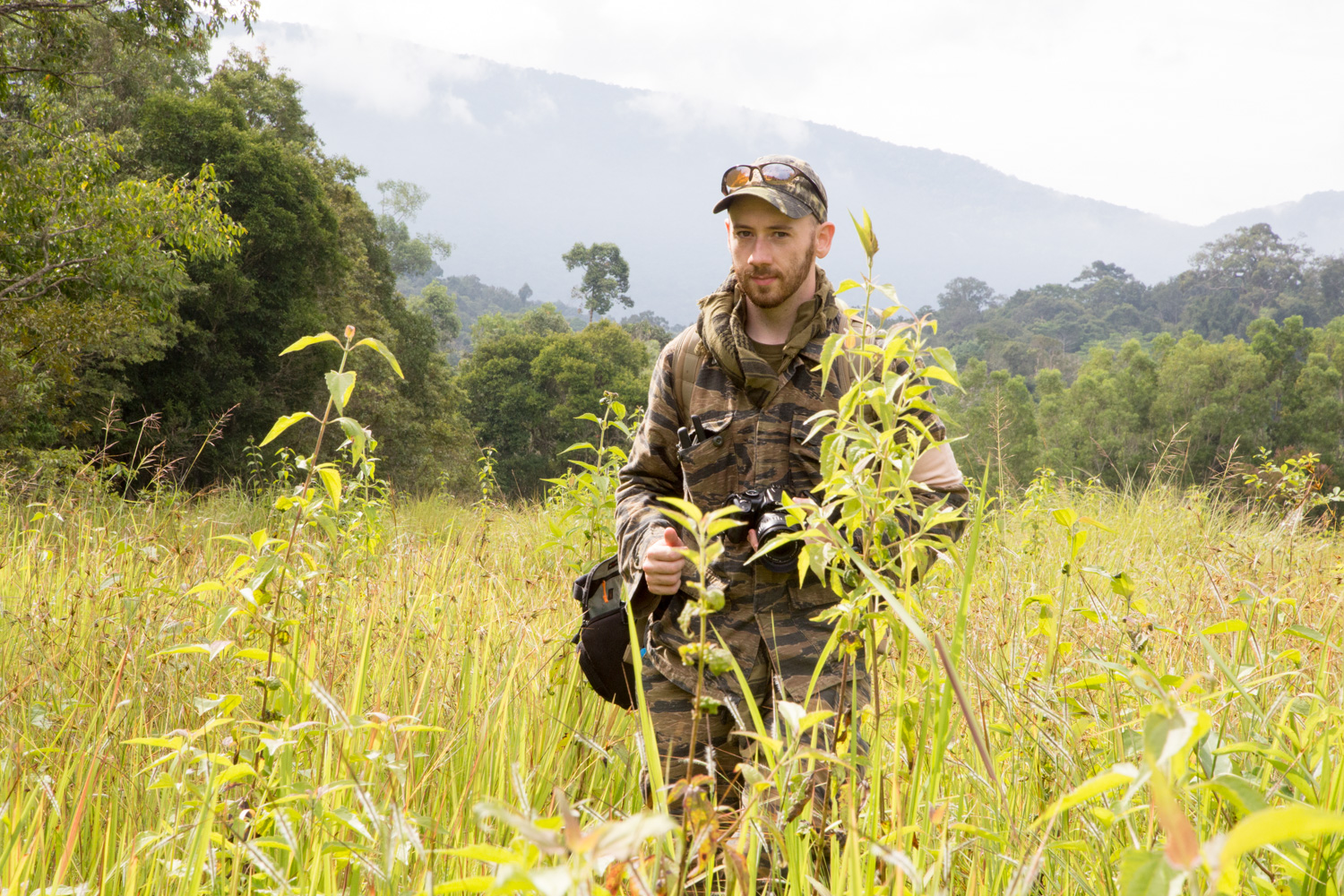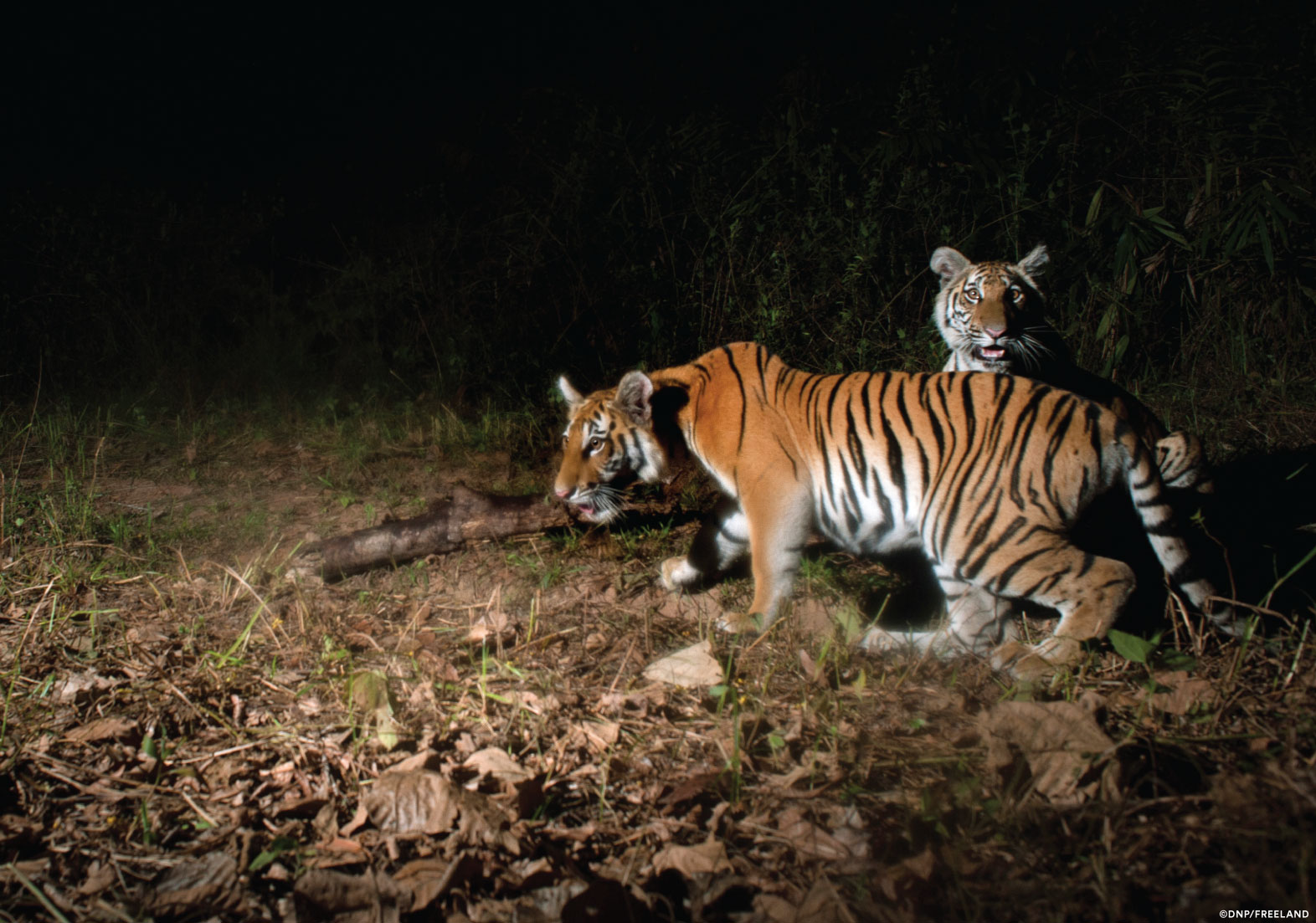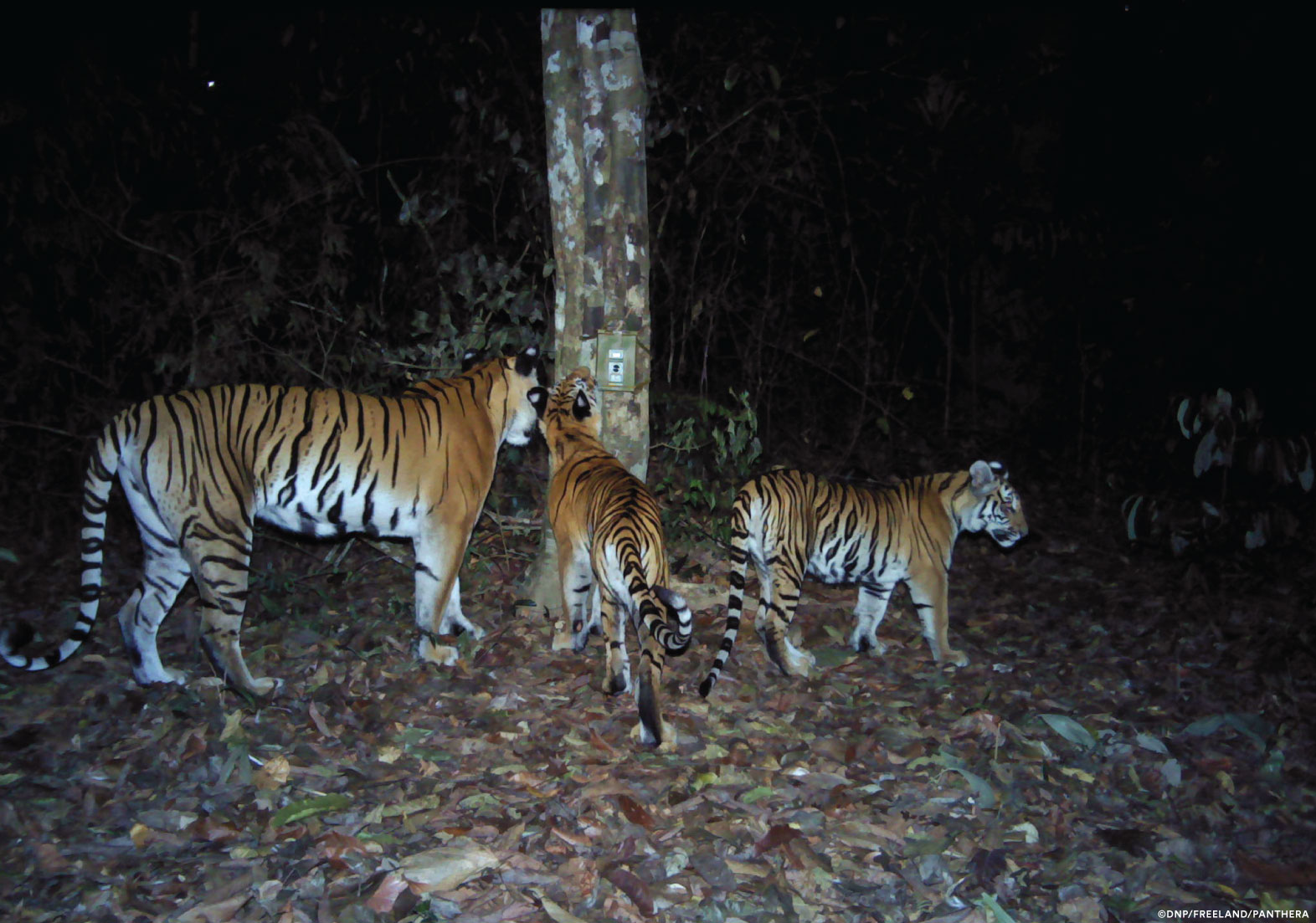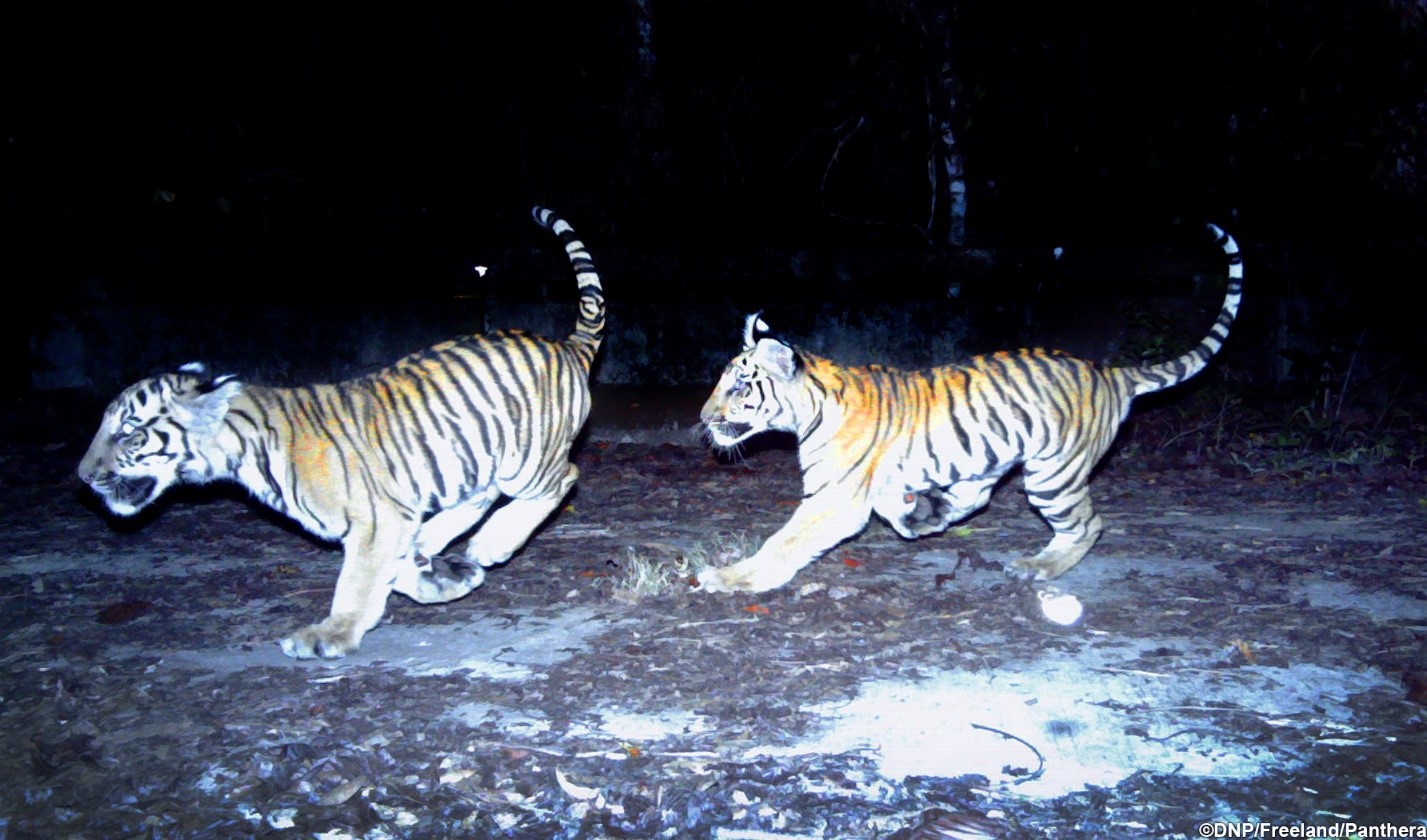Research
Thailand
Landscape Ecology Laboratory
Workflow for Conservation Planning
Landscape Change Analysis for Southeast Asia
Landscape Change Analysis for Southern Africa
Biodiversity Model and Guild Analysis in Southeast Asia
Bhutan
Thailand
Publications
For his DPhil, and in partnership with Freeland Foundation, Thailand and Panthera, Eric Ash is examining eight years of camera trap data from Eastern Thailand to identify the extent to which the population of Indochinese tigers is influenced by various ecological and anthropogenic factors.
Catastrophic population declines threaten the under-studied and endangered Indochinese tiger (Panthera tigris corbetti) with extinction. Thailand now plays a crucial role in its conservation, given few known breeding populations in other range countries. Thailand’s Dong Phayayen-Khao Yai forest complex (DPKY), a group of five protected areas and UNESCO World Heritage Site, is recognized as an important tiger recovery site at national and global levels. Recent research conducted through a partnership between the Thai government and Freeland have established this landscape as one of the few remaining breeding sites for the subspecies. This research has underscored the importance of understanding this population and its role in regional population recovery strategies.
Eric is conducting research to model tiger habitat selection, avenues for dispersal, and landscape connectivity. This includes a first-of-its-kind assessment of the effect of spatial scale- and functional shape-optimization on habitat selection modelling and how this approach describes habitat selection of tigers. Eric is also utilizing connectivity modelling algorithms (e.g. resistant kernel and factorial least cost path analysis) to predict and map potential corridors for tigers within and beyond this landscape. This research includes an investigation into the sensitivity of landscape connectivity analysis to variations in key parameters. This research ultimately aims to assist in the development of long-term tiger population recovery strategies in this area while providing additional insight into analytical methods in landscape ecology.
News:
January 2020 – New Study Confirms the Importance of Tiger Population in Thailand’s Dong Phayayen-Khao Yai Forest Complex
Ash, E., Hallam, C., Chanteap, P., Kaszta, Ż., Macdonald, D. W., Rojanachinda, W., . . . Harihar, A. (2020). Estimating the density of a globally important tiger (Panthera tigris) population: using simulations to evaluate survey design in Eastern Thailand. Biological Conservation, 241(108349). doi:https://doi.org/10.1016/j.biocon.2019.108349
Ash, E., Kaszta, Ż., Noochdumrong, A., Redford, T., Chanteap, P., Hallam, C., . . . Macdonald, D. W. (2020). Opportunity for Thailand’s forgotten tigers: assessment of the Indochinese tiger Panthera tigris corbetti and its prey with camera-trap surveys. Oryx, 1-8. doi:https://doi.org/10.1017/S0030605319000589
Macdonald, D. W., Bothwell, H. M., Kaszta, Z., Ash, E., Bolongon, G., Burnham, D., . . . Cushman, S. (2019). Multi-scale habitat modeling identifies spatial conservation priorities for mainland clouded leopards (Neofelis nebulosa). Diversity and Distributions, 25(10), 1639-1654. doi:https://doi.org/10.1111/ddi.12967









